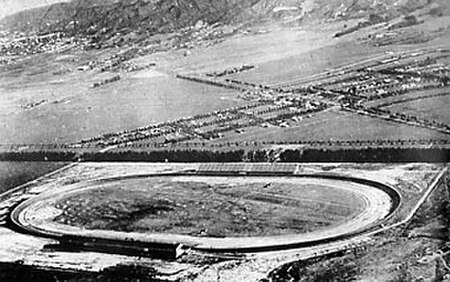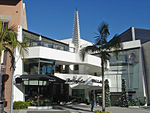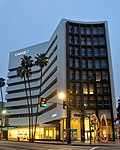Beverly Hills Speedway

The Beverly Hills Speedway (also called the Los Angeles Speedway) was a 1.25-mile (2.01 km) wooden board track for automobile racing in Beverly Hills, California. It was built in 1919 on 275 acres (1.11 km2) of land that includes the site of today's Beverly Wilshire Hotel, just outside the "Golden Triangle". The former site is bounded by Wilshire Boulevard, South Beverly Drive, Olympic Boulevard and Lasky Drive. The project was financed by a group of racers and businessmen that called itself the Beverly Hills Speedway Association. The track was the first in the United States to be designed with banked turns incorporating an engineering solution known as a spiral easement. The Speedway operated for four years and attracted many historically significant competitors including Ralph DePalma, Jimmy Murphy, and Tommy Milton. It was also the site of a racing accident that killed National Champion (posthumous) and Indianapolis 500 winner Gaston Chevrolet in 1920. Because of rapidly increasing real estate values, the Speedway became an uneconomical use of property. The track was torn down and the Association moved its racing operation a few miles away to Culver City, California in 1924.
Excerpt from the Wikipedia article Beverly Hills Speedway (License: CC BY-SA 3.0, Authors, Images).Beverly Hills Speedway
South Camden Drive,
Geographical coordinates (GPS) Address Nearby Places Show on map
Geographical coordinates (GPS)
| Latitude | Longitude |
|---|---|
| N 34.066111111111 ° | E -118.40222222222 ° |
Address
South Camden Drive 128-130
90212 , Pico-Robertson
California, United States
Open on Google Maps







